Pete Sutton's Blog, page 6
May 7, 2021
Guest post by Stark Holborn and review of Ten Low

Stark Holborn is a novelist, games writer, film reviewer, and the author of Nunslinger, Triggernometry and the forthcoming Ten Low. My review of Ten Low follows Stark’s post. I got to ask her about her writing by asking: What did you learn about writing while writing this book?
I studied literature at university, and critical reading formed a large part of the course. It’s something I loved at the time; digging into prose or poetry with a group of people and hearing their individual takes on the piece. I still do it now, in that I learn most about writing by reading. There’s something electric about coming across a passage that makes you sit up as a writer. I experienced that recently while reading How Much of These Hills Is Gold by C Pam Zhang. Her prose is both terse and teeming with rich description that resulted in so many goddam it that was great moments.
The best part of writing for me, one of the reasons I do it, is for the flow – that glorious feeling when you lose track of time and everything around you because you’re so immersed in the story. It’s addictive, and I’m fairly sure that’s when I write my best stuff.
A decent chunk of Ten Low was written that way. It actually began as my 2019 NaNoWriMo project; something I was going to write purely for myself, with no strings or ties to the publishing world. I wrote about 55k words that month in a headlong, heady rush.
Then, then, I had to turn it into a novel. I’d sort of planned it as three interlinked novellas originally, and demolishing that idea and pulling the story together into a whole was easier said than done. I have no idea why it was so hard, now. Maybe the pandemic? Can I blame the pandemic? But at the time it had me lying face down on the floor, fretting, stalling, deleting and generally failing for a good month. That’s never happened to me before; usually the first 30k words are the hard bit, then it’s downhill cycling.
Eventually – and ironically in-keeping with the novel’s themes – I was so desperate I resorted to a form of augury by picking up the dictionary, closing my eyes, and jabbing at random words. Horribly, it worked. (Although I think, rather than spiritual intervention it was a case of giving myself permission to seize on an idea and run with it, without preconceptions.) In this case, it was the word “buzzard”. That word gave me the idea for a character, a scenario and then I was off… I managed to finish a draft of the book within a couple of weeks.
The editorial process is incredibly important to me, and I’ve been lucky to work with two amazing editors on Ten Low – George Sandison and Tasha Qureshi – who took that messy, dusty manuscript and helped to shape it into its best possible form. I truly couldn’t have done it without them. (Just don’t remind them about the 14,000 track changes…)

Publisher’s blurb:
Ten Low is an ex-army medic, one of many convicts eking out a living at the universe’s edge. She’s desperate to escape her memories of the interstellar war, and the crimes she committed, but trouble seems to follow wherever she goes. One night, attempting to atone for her sins, she pulls a teenage girl – the sole survivor – from the wreck of a spaceship. But Gabriella Ortiz is no ordinary girl. The result of a military genetics programme, she is a decorated Army General, from the opposing side of the war to Ten. Worse, Ten realises the crash was an assassination attempt, and that someone wants the Ortiz dead…
I’m seeing that the book is garnering comparisons with Mad Max Fury Road, Firefly and Dune and, although it is a mad chase across a desert planet that feels kinda post-apocalyptic, I’m not sure it’s fair to the book to suggest it’s at all derivative. It’s very much its own thing. I think it dips into the same well of influences and does something different with them.
Factus (the moon where the book is set) is a bleak setting and the last outpost before the void. A war has raged and has only recently been won by the Accord and the enemies of the Accord have been sentenced. Ten Low (her name is her sentence) was on the losing side and is now atoning.
It’s a great piece of worldbuilding, with great characters, with a plot told with skill at great pace. It’s a western in space and therefore at its heart is a question of justice. (What else would you expect from Stark Holborn’s SF? There’s even a hint of mathematical possibility, and a hidden presence that thrives upon it, for fans of Triggernometry)
I very much enjoyed this and have no hesitation whatsoever in recommending it. In fact it’s going to be the kind of book I place in people’s hands encouraging them to take a trip to the frontier. It manages to feel classic SF and yet fresh at the same time – a wonderful and heady mix.
April 30, 2021
Writing About Writing About Writing Review 22
Part 22 of an intermittent series where I read or re-read the writing books on my shelf to see if they’re worth keeping. See previous part here
I’ve moved on to Nuts & Bolts of Scriptwriting.
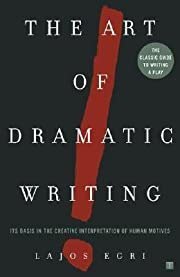
First up was the venerable Art of Dramatic Writing by Lajos Egri. I’m not sure about this book. It has really good info and is a great primer for writing plays (and other dramatic writing – but mainly plays) BUT the writing makes my brain squirm. I’m not sure why but I just don’t get on with it. On balance I’m going to ditch it (I’m probably never going to write a play anyway, I have it because playwriting can teach you a lot about dialogue and how to reveal character through dialogue).
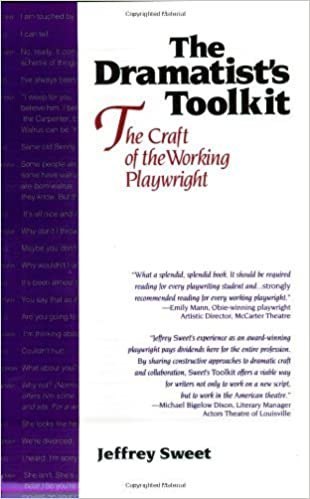
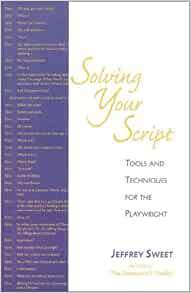
These two books from Jeffrey Sweet are a playwright’s guide to writing plays. Again, lots of great info but the writing style puts me off. Sweet is so full of himself and assumes that you know Shakespeare and other classics as well as contemporary (to him, not so much to now) plays in depth. I think that’s fair if you want to be a playwright you should read and watch a lot of plays. But as an interested observer I felt as though I was missing stuff. Great description of how dialogue/character exchanges are generally an act of negotiation and some nice tips on stagecraft but not so much use to a novelist (imho). The two books are basically one on theory and one that’s more a workshop in book form.
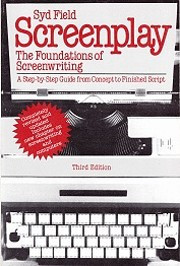
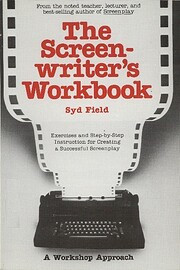
Another pair of books – one theory, the other a workshop in book form are the classic books on screenplay by Syd Field. These two books together will teach you how to write a script. They’re a little dated and Field loves Chinatown and uses it more than any other film to illustrate his points, so if you’ve not seen it (and are not prepared to fork out the money for the script which seems a) out of print and b) quite expensive) you may feel you’re missing some of the effects of the examples. (He does quote extensively from the beginning of Towne’s script though.)
I feel these are the basic building blocks of a scriptwriting library and are a very good explanation of the 3 act paradigm. The workbook talks you through a 16 week schedule for writing a script. Useful if you want to follow a set process.
I have a couple more screenwriting books and The Complete book of Scriptwriting by Straczynski to read next.
Drop a comment with your favourite writing book or tip here or email me via the Contact page. If you’re a publisher or Indie Author and would like me to review your writing book drop me a line!
April 29, 2021
Interview with Alistair from Books on the Hill
Books on the Hill are running a Kickstarter to launch a series of books for Dyslexic adults. I spoke to Alistair who runs the shop and asked him all about it.
Tell us a bit about Books on the Hill and the Kickstarter
We are an independent bookshop that is dyslexic friendly, based on a beautiful street of independent shops/restaurants, called Hill Road, in the historic seaside town of Clevedon, North Somerset. We set up in 2014, with my partner Chloe, and my mother Joanne. The town itself has great travel links from Junction 20 off the M5 and is just 13 miles from Bristol and 10 miles from Weston-Super-Mare. But we don’t stay just at the shop, we have also been around the country on the fantasy Con circuit, going to Eastercon, Bristolcon, and Edge-lit (when we’re able ). We did though partake in the ambitious digital Eastercon this year.
Check out our website. https://www.booksonthehill.co.uk


The Kickstarter will enable us to publish and print 8 dyslexic friendly books for adults. Our long term goal is to continue publishing good quality adult fiction to produce a wide range of books for people who have challenges when reading.
We have been so lucky that many great authors have agreed to participate in this project. Not least the great friend of mine, Stan Nicholls who has supported me since my university days examining archaeology and fantasy and writing fictional narratives for my PhD.

Joining Stan in this project is Steven Savile, another bestselling author, whose father lives in Clevedon and is a customer of the bookshop.

Then we have the horror duo that is Thana Niveau and John Llewellyn Probert, both well established and engaging authors, who also happen to live in Clevedon, and be customers of the shop.

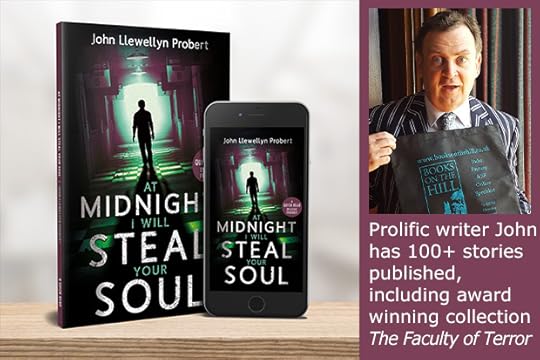
The Arthur Clark Award winning author Adrian Tchaikovsky joins us, who I have known for many years at Conventions across the country.
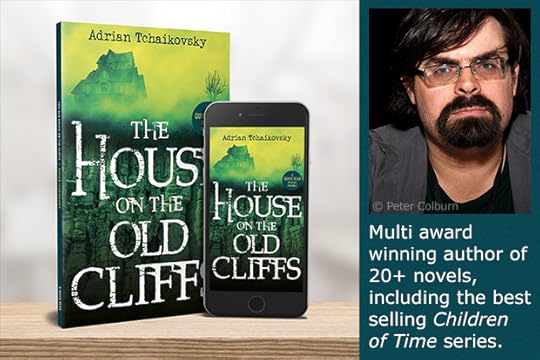
This introduction was the same with Steven Poore, who I met on my first fantasy convention in Scarborough.

We finish the Magnificent Seven with Joel Cornah, who is also has dyslexia, and joined us on our on podcast on dyslexia for the Clevedon Literature ‘Festival in the Clouds’.

Last we checked we had nearly reached our advance base camp of £6000, which will unlock the 6th book, The Clockwork Eyeball, by Steven Poore.
We have two more targets reach and at each another book will be unlocked. At 7000, John Llewellyn Probert, At Midnight I will Steal Your Soul and at 8000, we will publish the classic, The Man Who Would Be King.
Among the normal rewards of Books, we have some unique rewards form the authors. They are running out quickly.

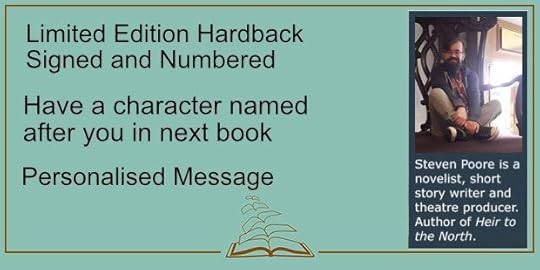


Check the Kickstarter here: https://www.kickstarter.com/projects/both-opendyslexia/open-dyslexia
Why Dyslexic books for adults?
Books are an important part of life even though I was diagnosed as dyslexic when I was 10 and I struggled to read properly until I was 13. However I have gone on to get a PhD, have two academic papers published and now run an independent bookshop.
Dyslexia doesn’t go away when you become an adult, it is for life and dyslexics develop different coping strategies to manage. I have days where reading and writing is a real challenge and I know a lot of dyslexics feel this way.
Although there is now a great range for children with dyslexia, the publishing industry has not addressed adult dyslexics and this is what has spurred me on to launch BOTH press where we can bring really great books to the market that are adapted to the needs of those with reading difficulties.
What is a Dyslexic-Friendly format?
This is a question we get asked a lot. And one of the reviewers of the books (read anchor point) before reading thought we may have made the language simple and so was not expecting to enjoy reading it. But this was not the case. The reviewer in question really enjoyed the book and said how it defied her expectations.
Check it out here
We are not changing or simplifying stories. What we are doing is changing the format of the books. We did research in working out the best way to do so and the brilliant Chrissey Harrison formatted each book.
Cream paper, which is thicker than normalLarger spacing between sentences and paragraphsLager Font sizeUsing Verdana fontTell us about the books
So we have 8 books we want to publish with the help of the Kickstarter.
We have Ultrasound shadow, which is a thoughtful treatise on pregnancy wrapped up in a bloody body-horror bow. Thana Niveau brings the ordinary into the supernatural.

After checking the test twice, there’s no doubt about it; Molly Landor is pregnant.
She’d always imagined having kids – someday – but she’d hoped it would be her choice. Planned. Not… an accident. Somehow she just knows – she has to keep it.
As the pregnancy progresses Molly’s behaviour grows increasingly erratic – she pushes her friends away, isolates herself and refuses to see a doctor. Eventually, even Molly begins to fear there is something unnatural growing within her.
There is Anchor Point, where Stan Nicholls brings a note of nostalgia of Heroic fantasy, with his signature storytelling, a tale of heroism and personal growth. One that can be read and re-read, always bringing a smile at the finish.

The village of Catterby is beholden to no lord or lady. No one believes Lord Salex Nacandro, a sorcerer from far to the north, could be a threat.
They’re wrong.
Young warrior Kye Beven lacks confidence. Everyone – except Kye’s friend Dyan – questions how he was ever selected to join the ‘Band’, the elite protectors of the village.
But when Catterby is menaced by an emissary of Nacandro, Kye reaches for his bow and steps up to the mark.
Next up is Steve Savile, with Four Kings of Sweden, and who hits the perfect note in this homage to Sherlock Holmes. Those who are familiar with Conan Doyle style of prose and storytelling are in for a treat.

How can one man be in four places at once?
Lecturing to a carefully selected audience, Dr Watson recounts the unravelling of this impossible riddle after he and The Great Detective are summoned to Stockholm.
The King of Sweden has been spotted in several cities on the same day, many miles apart. Threats of blackmail hint at some dark purpose behind this deception. As Holmes and Watson dig deeper, they uncover a convoluted plot of murder, mummery, and mesmerism.
The House on the Old Cliff, an imaginative mystery to be solved, which Adrian Tchaikovsky, a master of the unexpected, manages to entice and string you along, until you don’t want, but need to know the answers.

Pseudo-historian Doctor Hendry is missing. His employers want answers.
Paranormal investigators Michael and Walter join the search party to Hendry’s remote Scottish cliff-top home, accompanied by two unscrupulous mercenaries and a deeply sceptical history professor.
Among the doctor’s research they find more than they bargained for or can even comprehend, and the rescue becomes a fight for survival.
We have The Breath, where Joel Cornah, creates an intriguing science fiction story that slowly peals a layer upon layer of rubble to expose myth and science combined.

The planet Wanda V has been abandoned ever since the Gates collapsed, generations ago.
Scraping together funding and borrowed equipment, scientist and archaeologist Hala ventures into the ruins. Alone on the desolate planet, Hala finds there may be more truth in the myths of invading gods than anyone suspected.
Can Hala escape? And what does this self-proclaimed deity want?
There is The Clockwork Eyeball, which is Reminiscent of masters of the spy genre, Steven Poore tells a tale of derring do in a world of intrigue, with his usual flare and immaculate writing.

1958. An alternate Marrakesh. The Cold War wages on and with the launch of Sputnik, Russia is conquering space at last.
Young Saif’s mission; escort an undercover British agent to the Deputy Security directorate. Evading high tech Russian surveillance devices, Saif borrows a grand taxi and heads to the pick-up point. But the agent – aka “The Lighting Rod” – is the one man guaranteed to make a dangerous situation more perilous.
The race is on to escape the Russian secret service and deliver the spy safely into British hands.
With At Midnight I Will Steal Your Soul, John Llewellyn Probert certainty delivers a quintessential horror. Building on its atmospheric setting the mundane descends into madness.
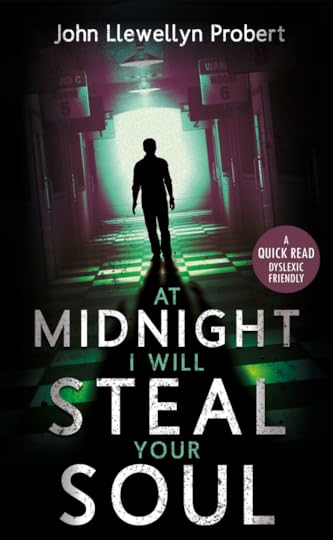
Searching for a new creative outlet, just for herself, Lynda joins Dr Sampson’s choir at the local psychiatric hospital.
As she approaches the gates of the gothic monstrosity on a rain lashed evening, she tells herself it’s just her imagination setting her on edge… right?
She keeps telling herself that, until she finds she is a prisoner. Something doesn’t want her to leave.
Last and not least, we have the classic that is The Man Who Would Be King, by Kipling and is arguably the best and certainly the last story that he wrote while living in India.

Why Quick Reads?
Here is what I’d call a dad joke, others may call it a crap joke  — but it has relevance — BOTH press is for both.
— but it has relevance — BOTH press is for both.
What I mean here; it not just for people who have trouble reading, i.e. dyslexia, but also those who want to read something really good, but it won’t take much of their time. So if you are on a train and you need a quick read before getting to your next stop, I’d see these books being perfect for that. It also I feel really nice for authors to have one story in print, rather than in an great big anthology. This may also be great for readers who love that one story that has been in anthology and want to read that specific story.
How did you choose authors and commission books?
One of the joys and privileges of a being a bookseller is you get to know authors. And so when I started this project, I began by basically asking authors I know if they would be happy to contribute. Some were really busy and couldn’t at the time, some were novel writers only and didn’t do short stories. So we quickly filled out the amount we needed, seven authors, and we knew we wanted to do at least one classic, which brought it to eight.
We then went through the process that all publishers go through. We read the stories, checked that they were right for us. We then gave thumbs up and created contracts for the authors, and they then went to be edited.
In the future, we still plan on asking authors we know, but also looking into get the rights to pre-existing stories, having open subs at specific times and of course doing some more public domain stories.
Were there any editing challenges to make the books Dyslexic Friendly?
Generally there wasn’t really any editing changes in the books that were specific to dyslexia. We just want to make sure they were the best stories we could to publish. And so we involved two great editors, Joanne Hall and Vicky Brewster, who both did a fabulous job. The formatting was the crucial thing for us in regards to dyslexia.
The books look great, how did you go about sourcing the art and doing the design?
Thank you. We are really proud of how the book covers have come out. It has been a process between myself and Chrissey Harrison. Most of the covers start with me playing around, creating concept designs, then feeding them to Chrissey with her more polished design skills. We have a chat, and she goes away to play with it too. Some of my concept-work didn’t gel, where I struggled a little find the right tone, and Chrissey pulled them out of the bag, such as Steven Savile’s Four Kings Of Sweden; while on others the final cover has not changed at all from my original concept, such as Thana Niveau’s Ultrasound Shadow. In the end I had the final say on the cover, but it was a collaborative process between two of us, where Chrissey in the end made the covers look pristine and what you see now.
What’s the future of the range? Do you have more books in the pipeline now you’re funded?
The future I feel is bright. There is certainly a want and a need for these books. We are not yet fully funded for the eight books. With a few day to go I sure we will have at least 6 book funded. Hopefully we will have a mad last day and get us over our £8000 need to do all eight books.
Yes we do have more book sin the pipeline if we get over the target and reach 9000 and the 10.000. One of these will be a historical crime fiction by J.M Alvey otherwise known as Juliet McKenna. We are planning on doing a number of out of copyright stories, such as The Yellow Wallpaper, by Charlotte Perkins Gilman, amongst others. We are of course taking to more authors, so let watch this space.
Many thanks to Alistair for answering my questions and if you’ve not yet checked it out please do go and pledge to the Kickstarter
.
April 16, 2021
Writing about writing about writing: The index
I’ve been doing this review process for almost a year. The first post was back in June 2020. In that time I’ve reviewed just less than 100 books and mentioned a further 30 on the shelves. A friendly reader asked me to include an index so here we go:
BookRatingTypeWAWAWElements of StylekeepHow to English1The Transitive VampirekeepHow to English1The well-tempered sentencekeepHow to English1Complete Plain wordsdiscardHow to English2Sin and SyntaxkeepHow to English2Vex, Hex, Smash, SmoochkeepHow to English2Exercises in StylekeepHow to English3Contemporary Essays in StylediscardHow to English3The Anatomy of ProsediscardHow to English3On Writing WelldiscardHow to English3The Strategy of StylekeepHow to English3StylekeepHow to English3How to write a sentencekeepHow to English4Several Short Sentences about WritingkeepHow to English4Building Great SentenceskeepHow to English4EloquencekeepHow to English4Metaphors we live bydiscardHow to English5Introducing MetaphordiscardHow to English5Poetic DictiondiscardHow to English5History in English WordsdiscardHow to English5Poetry in the MakingkeepPoetry6How to be a PoetkeepPoetry6The Poet’s HandbookdiscardPoetry6The Ode less travelledkeepPoetry6Reading Like a WriterdiscardNuts & Bolts7Understanding NovelsdiscardNuts & Bolts7The Bestseller CodekeepNuts & Bolts8Understanding FictonkeepNuts & Bolts8The Making of a StorykeepNuts & Bolts9Aspects of the NoveldiscardNuts & Bolts9Classical Literary CriticismdiscardNuts & Bolts9Writing in the DarkkeepNuts & Boltsa slight detourWriting Horror FictiondiscardNuts & Boltsa slight detourHow to write a CYOA bookdiscardNuts & Boltsa slight detourThe Art of EditingkeepNuts & Boltsa slight detourTechniques of the Selling WriterkeepNuts & Bolts10Writing 21st Century FictiondiscardNuts & Bolts10The Organised WriterkeepGolden Parachutes10Writing Interactive FictiondiscardNuts & Bolts10The Emotional Craft of FictiondiscardNuts & Bolts11Save the Cat writes a novelkeepNuts & Bolts11release the batsdiscardNuts & Bolts11Monkeys with TypewritersdiscardNuts & Bolts12Consider thiskeepNuts & Bolts13The art of subtextdiscardNuts & Bolts13The art of descriptiondiscardNuts & Bolts13The art of characterdiscardNuts & Bolts13Creating characterskeepNuts & Bolts13DialoguekeepNuts & Bolts15The Writer’s JourneydiscardNuts & Bolts14StorykeepNuts & Bolts14Damn Fine StorykeepNuts & Bolts14Narrative DesignkeepNuts & Bolts14Meander, Spiral, ExplodekeepNuts & Bolts15Story Trumps StructurekeepNuts & Bolts15Becoming a WriterdiscardOn Mount Olympus15If you want to writekeepOn Mount Olympus15The writing LifekeepOn Mount Olympus15How to be your own literary agentkeepGolden Parachutes15Editors on EditingkeepNuts & Bolts15Out on the wirekeepNuts & Bolts15Creating Short FictionkeepNuts & Bolts16Writing Down the BonesdiscardOn Mount Olympus16Bird by BirddiscardOn Mount Olympus16On Becoming a NovelistdiscardOn Mount Olympus16The Art of FictiondiscardNuts & Bolts16Word WorkkeepOn Mount Olympus17The writers book of doubtkeepOn Mount Olympus17How to write SF&FdiscardNuts & Bolts18How to write tales of horror, F &SFdiscardNuts & Bolts18Writers workshop of horrorkeepNuts & Bolts18Where Nightmares come fromkeepNuts & Bolts18Environmental & Nature writingkeepNuts & Bolts18Pocket WorkshopkeepNuts & Bolts19The 38 most common mistakeskeepNuts & Bolts19The last draftkeepNuts & Bolts19Fiction first aidkeepNuts & Bolts19Revising fictionkeepNuts & Bolts19Self-editing for fiction writerskeepNuts & Bolts19What editors dokeepNuts & Bolts19Graphic Storytelliing and visual narrativekeepNuts & Bolts20comics and sequential artkeepNuts & Bolts20Understanding comicskeepNuts & Bolts20making comicskeepNuts & Bolts20Drawing Words & Writing PictureskeepNuts & Bolts20Mastering comicskeepNuts & Bolts21Words for picturesdiscardNuts & Bolts21the art of comic book writingkeepNuts & Bolts21writing comicskeepNuts & Bolts21Writing About Writing About Writing Review 21
Part 21 of an intermittent series where I read or re-read the writing books on my shelf to see if they’re worth keeping. See previous part here
As per the last of these I’ve been reading “How to Write comics” books. First up was the sequel to Drawing Words & Writing Pictures which was in the last review.
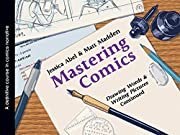
This is another how to make a comic book from the creator perspective rather than a comic script artist per se. There are chapters on perspective, style, colouring and more details on how to create an online comic and how to use computers when creating comics (more than the first book.) It also includes some tips on writing and chapters on publishing. It’s a worthy sequel and, if you can afford it, and are an aspiring comics creator (not just a comics writer) I’d say these books and McCloud’s Understanding comics need to be on your shelf.
However as a writer with little to no artistic ability I’m looking for advice specifically on writing for comics. The next three books promise that.
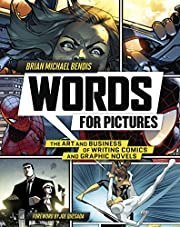
Words for Pictures by Brian Michael Bendis is a ‘How to’ that I didn’t get much from. It’s interspersed with interviews with comics creators, has a bit of Bendis’s autobiography and ‘how I made it into comics’ and some advice on how to write both Marvel scripting and Full Scripts. It was an entertaining enough read but I didn’t feel like I’d learned much by the end of it and therefore onto the discard pile it goes.
The next two books were much more pedagogical.
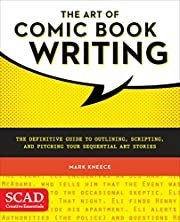
The Art of Comic book Writing by Mark Kneece is an excellent resource running from story ideas to formatting scripts to how to talk to artists, the special challenges of pacing comics and putting together a pitch for comic editors. This was a great starter pack for the budding comics writer.
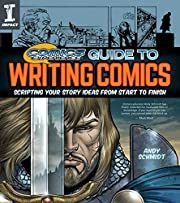
The Comics Experience Guide to Writing Comics by Andy Schmidt was also an excellent read. The book is divided into three parts – how to write a story, how to write a comic and how to be published. The how to write a story section did a better job of explaining story than many much larger books I’ve read and Schmidt is a great teacher. I can’t quite decide which of these two books is the better all-rounder and am therefore keeping both.
I’m now moving onto other media – first up is Playwriting. Starting with that classic: The Art of Dramatic Writing by Lajos Egri.
Drop a comment with your favourite writing book or tip here or email me via the Contact page. If you’re a publisher or Indie Author and would like me to review your writing book drop me a line!
April 8, 2021
No Sleep Omnibus Review

Thanks to Titan who sent me a review copy of the No Sleep Omnibus by Paul Tremblay in return for a review.
I’ve just checked my reading log and see that I read The Little Sleep in August 2012 – so almost a decade ago. I remember it being whipsmart and a great read (I gave it 4 1/2 stars in my review at the time) I was glad to re-read it and discover it was just as good as I remembered it. For some unknown reason I’d never caught No Sleep till Wonderland though so it was nice to read a new Mark Genevich novel too. I remembered the first book fondly so that when Tremblay’s horror book – A Head Full of Ghosts – came out I snapped it up and have bought everything he’s done since.
The publisher’s blurb:
This omnibus collects Paul Tremblay’s darkly comedic debut noir novels. Carrying all the hallmarks of Tremblay’s later work, they introduce Mark Genevich, a narcoleptic detective operating out of his mom’s apartment in South Boston.
In THE LITTLE SLEEP, Genevich is hired by a reality TV star, also the DA’s daughter, for a simple job – to identify a girl in a photo. Except she is the girl in the photo, and he doesn’t really remember meeting her. Wrangling deception, intrigue, cataleptic hallucinations and a body that could fall asleep at any moment, Genevich follows the trail into his own family history, and his departed father’s legacy.
NO SLEEP TILL WONDERLAND sees Genevich forced into group therapy by his landlord mother or face eviction. He’s working a case, finding a local suit’s lover, and getting to know his new friend, Gus. But soon Genevich is pulled into events over his head – rescuing a child from a burning house, maybe?; drug deals with a local bouncer and dealer; possibly getting a girlfriend. But solving mysteries is what Genevich does, starting with the mystery of what happened to him whilst he was asleep…
What struck me about the book was that the aforementioned whipsmart prose was, indeed, very clever and it was obvious from chapter 1 that Tremblay was going to be an author to watch. A narcoleptic PI is a great premise and Tremblay uses it well. If you’re a fan of noir, of Chandler (and who isn’t?) then you’ll love this.
Highly recommended.
April 6, 2021
3 Reviews
These are three seemingly very different books but all sent to me because I link them together through location

Advanced Triggernometry by the incomparable Stark Holborn

Million-Story City by Marcus Preece (does contain a Western novella so some link/comparison can be made)
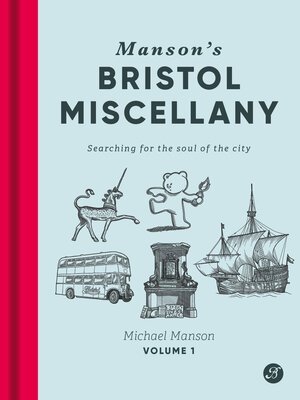
Manson’s Bristol Miscellany is set in Bristol, home to Stark and the publisher of the Preece book.
If you’ve read Stark Holborn’s Triggernometry you’ll be glad to re-enter her version of the Wild West where Mathmos are dangerous outlaws. (If you’ve not read Triggernometry get thee hence to remedy that lack forthwith.)
Malago Browne is approached by three women asking for her help to recruit a bunch of mathmos to help guard a town from a corrupt sherrif and his posse. So she collects a rather, shall we say, magnificent crew and heads for a showdown.
These novellas are great fun and I heartily recommend them. You can pre-order it here
Million-Story city is billed as a collection of writing from “one of the most interesting writers you’ve never heard of.” Which is what immediately drew me in – I like discovering obscure writers. It’s a real miscellany (see what I did there?) including short stories/novellettes, poetry, comics, a pub quiz and several screenplays as well as some reminiscences from his friends. Preece died too young and this book is obviously a labour of love (which in itself speaks volumes) Not all the material is 100% polished but the voice is unique and I really enjoyed the collection. My favourites being The Legend of the Lonesome Cowboy and the long screenplay Everybody’s Happy Nowadays.
Manson’s miscellany may not have actual cowboys in but it is a fascinating mélange of historical snippets. Starting life as magazine pieces Manson has wandered Bristol’s geography and history and serves up interesting little tidbits for your delectation. Discover the first female doctor, a nobel prizewinner, Bristol’s burden of shame from the slave trade4, it’s famous 18th century MP Edmund Burke and so much more. because it’s served up in bite sized pieces I found myself dipping into it in short sessions between other projects and fairly tore through it. Apparently there’ll be a volume 2 at some point too. Recommended.
March 31, 2021
Guest Post by Dan Coxon – The Sickness and the Cure: Mental Health in Horror

Horror has always been a genre that rests heavily on its tropes, from the suspicious stranger to the abandoned cabin in the woods. Unfortunately, it has also at times relied on a toxic trope that can damage more than it entertains: that of the mentally ill psychopath.
I’m currently crowdfunding the anthology Out of the Darkness with Unsung Stories, a book that aims to raise awareness of mental health issues within the horror and fantasy communities, as well as raising funds for charity Together for Mental Wellbeing. We have an impressive lineup for the book – Alison Moore, Jenn Ashworth, Tim Major, Aliya Whiteley and Simon Bestwick, to name just a few – but one of the things that several of the writers struggled with was how to present mental illness and mental health issues in anything other than a negative light. The horror trope has become so deep-seated that it’s hard to avoid.
I’m pleased to say that all sixteen contributors have found ways to engage with mental health in a more positive way – the light at the end of the tunnel, or as it says in our Kickstarter campaign, ‘the healing that comes after’. That doesn’t mean the stories have put a positive spin on mental illness, however, and it’s an important distinction to make. For many people suffering from mental health issues, there is no easy answer, no behaviour or pill that will suddenly make everything alright. It’s a struggle, and for some, a struggle without end. But what our contributors have managed to do is show their characters coping with, and living with, their problems, rather than succumbing to them. For someone living with depression or anxiety, just getting through another week can be a victory.
It’s unreasonable to expect that every horror story will fit this mould. After all, it’s in the genre’s nature that bad things will happen, and often to good people. Horror thrives on the reader’s fears and anxieties, and it has to play with those to work effectively; as soon as you start to pull some punches, you blunt Freddy’s blades. It’s not unreasonable to expect the horror writer to have a responsibility towards his reader, however – many of whom, remember, will suffer from mental health issues themselves – and be sensitive to the way they depict mental illness. To use a well-worn phrase, it’s about being part of the solution, not part of the problem.

One of the most obvious – and most often used – examples of the mentally ill character as psychopath is, of course, Psycho. Hitchcock’s movie has practically become the blueprint for a certain type of horror narrative, and the depiction of Norman Bates is both memorable and horrifying. Rather than re-tread the same old arguments, though, I’d like to consider a novel that was published in the same year that Psycho was released: Harper Lee’s To Kill a Mockingbird.
While not a horror novel, Mockingbird plays with some of the horror tropes, in the same way that it borrows heavily from crime fiction. In particular, reclusive neighbour Arthur ‘Boo’ Radley is the typical suburban bogeyman, a stranger who doesn’t fit in – and therefore, according to the trope, must be dangerous. Without giving too much away, Lee flips this trope around, for it’s Boo who rescues Jem and Scout later in the novel. It’s telling that Scout closes the novel by imagining what Boo Radley’s life must be like – a call for empathy that’s as relevant now as it was in 1960.
I’d like to suggest that To Kill a Mockingbird, with its flipping of the familiar trope and its empathetic ending, offers a new template for fiction dealing with mental illness – one that’s more constructive and less damaging than that offered by Psycho. Nobody has ‘cured’ Boo Radley, his life hasn’t suddenly turned up roses, but the story allows us to understand him in a way that Psycho doesn’t. Indeed, in sympathizing with him, I’m suggest that the reader experiences a deeper and more lasting form of horror: the horror that comes with realising how truly sad and damaged someone else can be.
It’s this kind of melancholy horror that I tried to achieve in my own collection, Only the Broken Remain, and it’s present in most of the stories in Out of the Darkness too. Not only is it a more responsible approach to writing about mental illness, especially when the readers themselves may be facing mental health problems, but it also tends to have a more lasting resonance. Beyond the jump scares and axe murders, there aren’t many places to go with the traditional psycho-killer narrative. There’s a reason that To Kill a Mockingbird has become a modern classic: empathy has the power to touch us on a much deeper level.
If any of this speaks to you, then I’d encourage you to check out and support our Kickstarter campaign for Out of the Darkness. Within its pages you’ll find a host of different ways to depict mental health issues in horror – but with an eye on writing responsibly as well as strong storytelling. Being a part of the solution, not the problem.
If you haven’t already done so, also take a look at Dave Jeffery’s excellent article ‘Brands That Serve to De-Humanise and Isolate’ on the Ginger Nuts of Horror website, and the Horror Writers’ Association’s Mental Health Awareness initiative. By reading around the subject and educating yourself on the facts about mental illness, it’s possible to create stories that not only thrill and horrify, but also show a way out of the darkness.
Out of the Darkness is crowdfunding now on Kickstarter . Featuring brand new stories by Jenn Ashworth, Alison Moore, Tim Major, Aliya Whiteley, Simon Bestwick, Verity Holloway, Malcolm Devlin and many more, it aims to raise awareness and funds for mental health charity Together for Mental Wellbeing . The crowdfunding campaign closes on 8 April.

March 19, 2021
Writing About Writing About Writing Review 20
Part 20 of an intermittent series where I read or re-read the writing books on my shelf to see if they’re worth keeping. See previous part here
This time round (and next) I’m talking books about comics. It’s been a long-held desire of mine to write for comics (friendly editors take note.) Seven Deadly Swords first iteration was a comic script (and I worked with an artist, but nothing came of it.) So over the years I’ve accumulated a few ‘writing for comics’ texts. I’ve split them into two categories – for comic creators and for comic writers. I’ll cover most of the comic creator ones in this blog post (I have one more which is kind of hybrid between creator and writer that I’ll cover in the next review, as I’m reading it next)
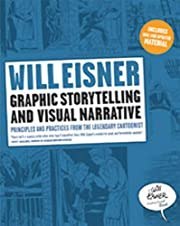
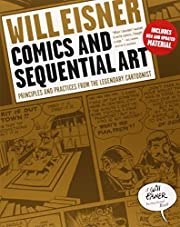
First up are books by a giant in the field (There is an award named after him.) But he’s problematic. There’s a character in The Spirit (Eisner’s groundbreaking comic) that is, well, a racist stereotype – see here for some discussion on Ebony White (That particular article argues that Eisner was merely a product of his time. The Wikipedia article on the character I link to above says: “[Eisner] acknowledged that he was conscious at the time that he was using a racial stereotype but remained unapologetic about it”) Eisner is dead, and I certainly didn’t know about this before buying these books several years ago but I’d hesitate to recommend these books at all. Eisner in these rather academic books is speaking to comic creators and it’s a masterclass – i.e. a class for would-be masters – on comics. However as there are other masterclasses (see below) I’d skip these now. I only mention them at all to make you aware that many people will reference these books without mentioning the overt racist angle within.
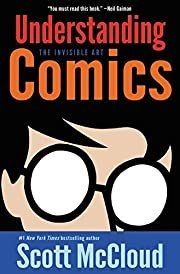
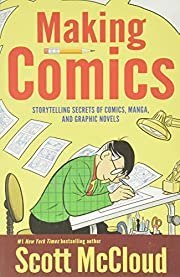
Much less racist (as far as I know) is Scott McCloud and this is where you should start. McCloud offers a masterclass in every way in these two books for the budding comics creator. If you want to create comics these are essential reading. I prefer Understanding Comics to Making Comics, but purely because I’m not an artist – my interest in comics would be purely scripting, but to be a good scripter you need to understand the art process (imho.) Understanding Comics is a good intro to comics even if you don’t want to be a creator and will help you appreciate the comics you read to a whole new level. If you want the nuts and bolts this is it.
There is a third book by McCloud (which I don’t have) called Reinventing Comics which talks about comics history and the technological advances (web-comics, using computers to create art etc.) that have come recently. I’ve put it on my wish list.
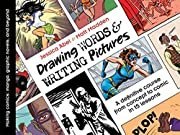
A small picture for a large book. Drawing Words & Writing Pictures by husband and wife duo Jessica Abel & Matt Madden is a more pedagogical approach to making comics. It’s a 15 week Semester of comic tuition in book format, complete with homework and a supporting website. I’d say that if after reading McCloud you’d like to get ink on your hands then move on to this book and follow the course. They run you through how to draw 1 panel, 3 panel, 1 page, and mini-comics. They talk about the tools you need (down to nib type) – how to set up your desk, how to pencil, ink (with pens and with brushes), how to scan your work and lots more. It’s a real hands-on version of what McCloud discusses in Making Comics. There wasn’t very much on story, character and worldbuilding (a chapter on each) but their next book Mastering Comics (the ‘hybrid’ book I’m reading next) promises to be more for the writer although it includes mastering colouring, perspective and ‘harder’ comic techniques than in the first book. My only gripe about these two books is the format. They are long books that don’t fit a bookshelf and I’m not sure they needed to be. That’s a minor gripe – but worth knowing before you fork out any cash on them.
After that I’ll be moving onto the books I have which are How To’s on actually writing scripts. Having had a thorough grounding on what’s involved in drawing comics I’m hoping to get a lot out of them. I’ll be writing a spec script following this (when I can fit it in among the other creative work I’ve got going on.)
Drop a comment with your favourite writing book or tip here or email me via the Contact page. If you’re a publisher or Indie Author and would like me to review your writing book drop me a line!
March 16, 2021
Clockwork Sister – A Review
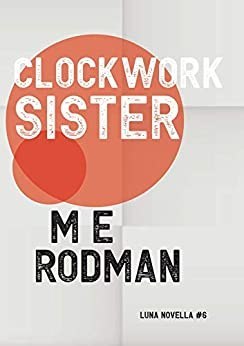
Clockwork Sister by M E Rodman is the sixth release in the Luna Novella series by Luna Press Publishing.
This is an ambitious novella which crams a fantasy novel’s worth of worldbuilding into a small space. The story follows Aeon a simulacra, a creation of flesh and clockwork magically combined to protect their rich human’s from the attacks of curse workers. Aeon is an identical copy of Mara, princess of the Tamyin Empire. When Mara dies Aeon is marked for unmaking. After a botched attempt to euthanise her, she is taken in by a family of rogue simulacra living in the city slums. When one of the rogues dies it uncovers a vast conspiracy at the heart of the empire in which Aeon is inextricably ensnared.
I really enjoyed this and it’s a nice, quick read. The world and characters are fairly developed but I couldn’t help but feel that they deserved more space. For example the variety of the different types of simulacra could have been expanded upon in subsequent trips to the same world. The very depth of the world was almost too rich for the page count. But maybe that just shows that I was left wanting more once the final page was turned?
Rodman is obviously going to be a writer to watch.
Pete Sutton's Blog
- Pete Sutton's profile
- 13 followers



